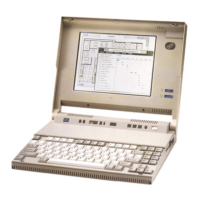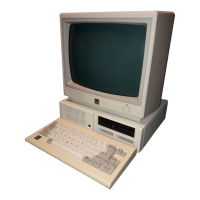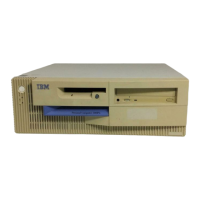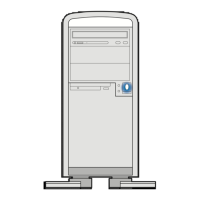operator and often involves performing routine
functions, such as mounting tape reels. (3) The
preparation
of
the system for normal operation.
signal. A variation
of
a physical quantity, used to
convey data.
software. (1) Computer programs, procedures, and
rules concerned with the operation of a data processing
system. (2) Contrast with hardware.
storage.
(1)
A storage device. (2) A device,
or
part of
a device, that can retain data. (3) The retention of data
in a storage device. (4) The placement
of
data into a
storage device.
Synchronous Data
Link Control (SDLC). A protocol for
management
of
data transfer over a data link.
synchronous transmission. (1) Data transmission in
which the time of occurrence of each signal
representing a bit
is
related to a fixed time frame. (2)
Data transmission in which the sending and receiving
devices are operating continuously at substantially the
same frequency and are maintained, by means of
correction, in a desired phase relationship.
syntax. (1) The relationship among characters
or
groups
of
characters, independent
of
their meanings
or
the manner
of
their interpretation and use. (2) The
structure of expressions in a language. (3) The rules
governing the structure
of
a language. (4) The
relationships among symbols.
text. In ASCII and data communication, a sequence of
characters treated as an entity
if
preceded and
terminated by one start-of -text and one end-of -text
transmission control character, respectively.
Glossary-8

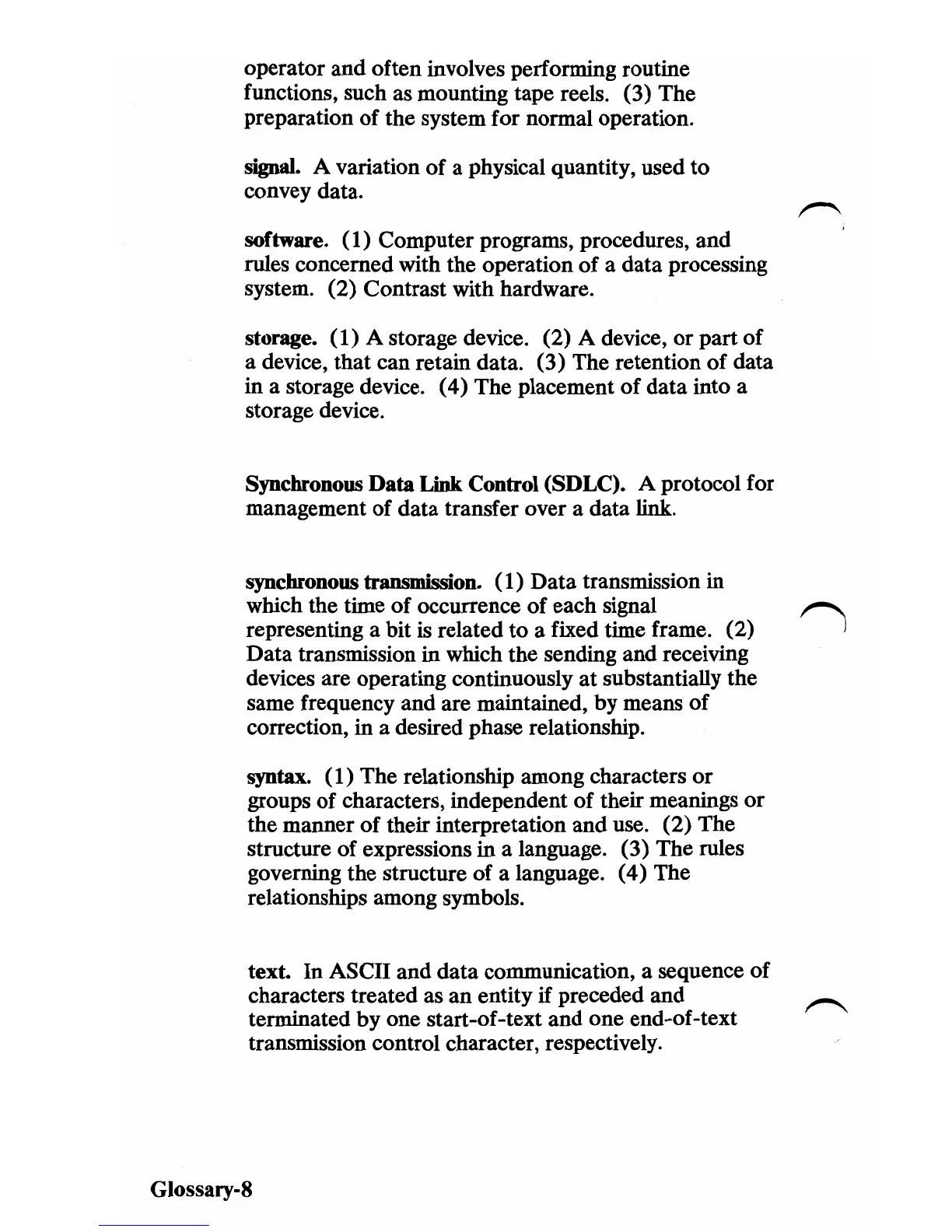